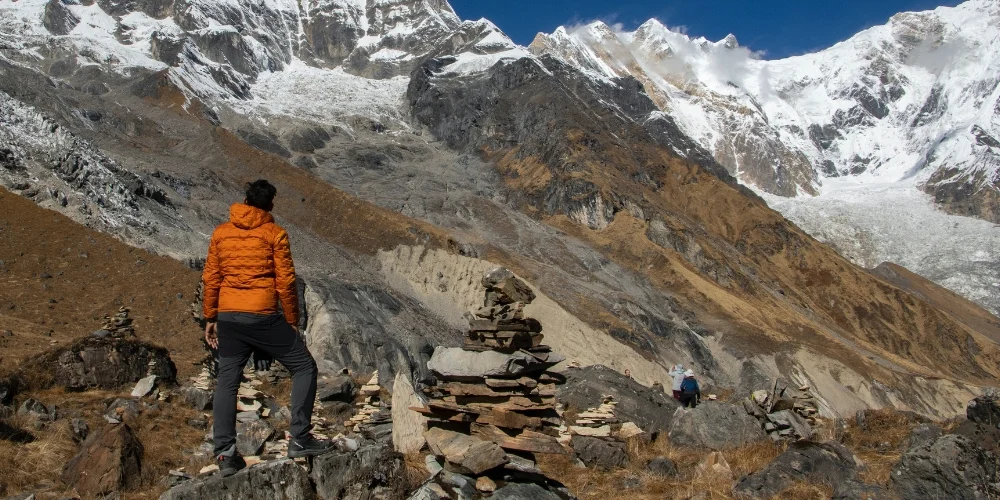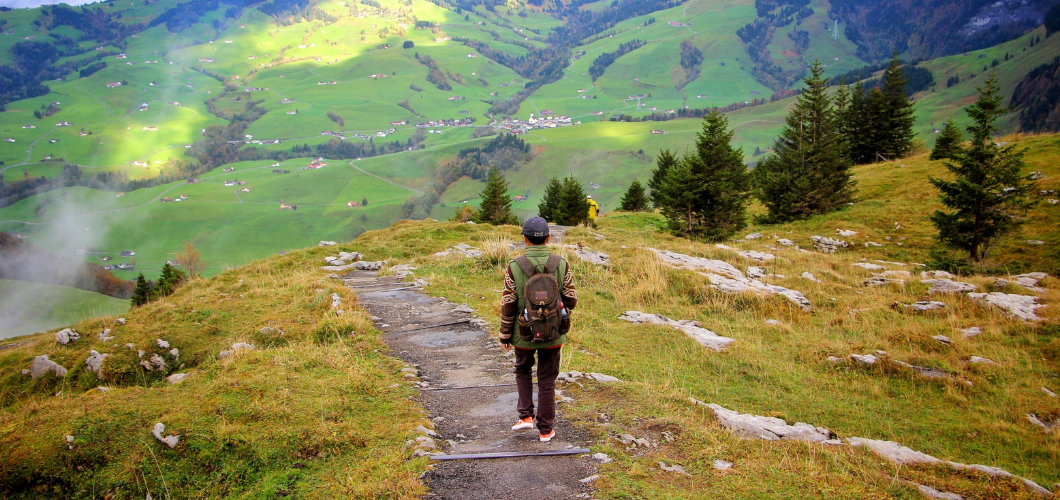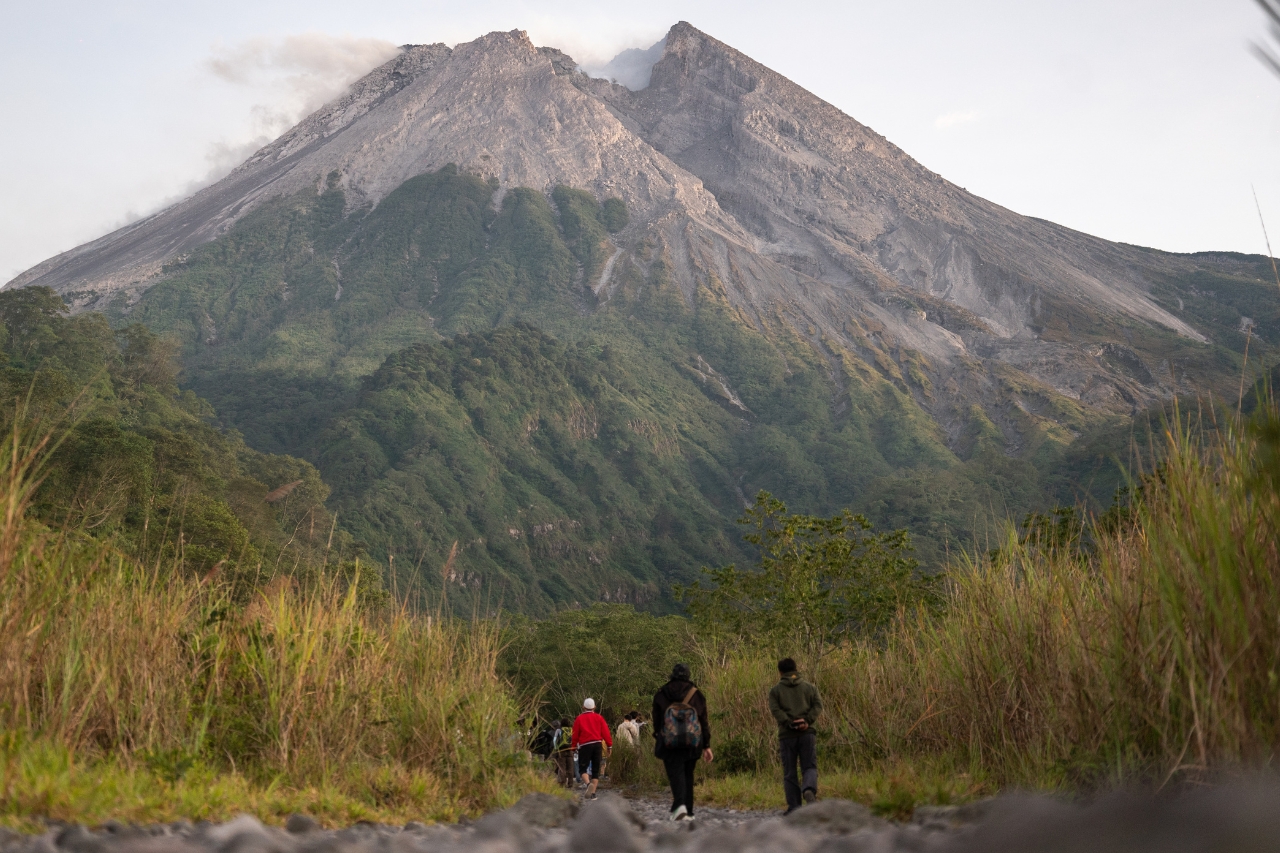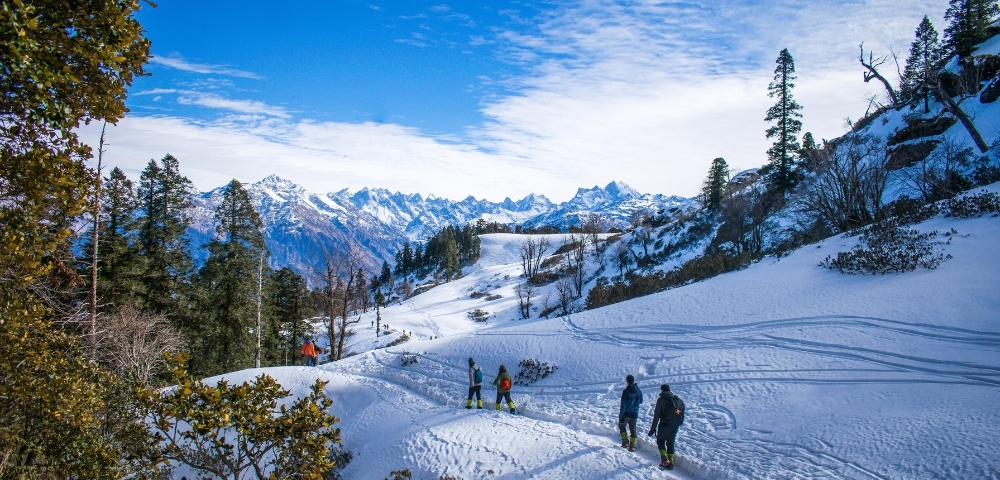
Trekking in Uttarakhand offers unparalleled experience, common beauty, and social richness. Renowned for its majestic scenes, this locale boasts Some of India’s finest trekking routes, catering to all levels of mastery. From peaceful glades to challenging glacier trails, investigating a journey in Uttarakhand may be a trip into nature’s untouched excellence.
Discover the Top 50 Treks in Uttarakhand and dive into the stunning beauty of nature’s most exquisite paths.
50 Unforgettable Treks in Uttarakhand You Need to Experience
Kedarkantha Trek
The Kedarkantha Trek is one of the most popular treks in Uttarakhand, and it culminates for beginners. This clear travel offers surprising sees and a calm climate, making it idealize for those unused to trekking. Starting from Sankri town, this 4-night, 5-day travel takes you to a rise of 12,500 feet, giving a culminate blend of encounter and tranquility.
Har Ki Dun Trek
Known as the Valley of Gods, the Har Ki Dun is a moderate trek in history and mythological importance, making it a beat journey in Uttarakhand. The path passes through rich forests, old towns, and snow-capped glades. Moreover, trekkers can appreciate diverse vegetation and fauna, together with social immersion, making it extraordinary.
Kuari Pass Trek
The Kuari Pass trek is a 5-day, 4-night adventure that gives dazzling all encompassing sees of peaks like Nanda Devi, making it one of the finest Himalayan treks in Uttarakhand. This moderately challenging travel is perfect for experienced trekkers, covering diverse scenes and permitting investigation of a number of the first great domains inside the district. As one of the best trekking goals, it guarantees an exceptional encounter within the Himalayas.
Ali Bedni Bugyal Trek
The Ali bedni bugyal Trek is one of the first wonderful trekking places in Uttarakhand, publicizing clearing raised glades encompassed by grand Himalayan peaks. This travel in Uttarakhand combines social encounters with breathtaking scenes, making it among the driving trekking in Uttarakhand.
Nag Tibba Trek
The Nag Tibba trek may well be a culminating introduction to trekking in Uttarakhand, promoting breathtaking sees of the Garhwal Himalayas. Renowned as one of the leading trekking places in Uttarakhand, this travel combines coordinated trouble with assorted scenes As a weekend getaway, it remains the best choice for exploring quiet and available places for trekking in Uttarakhand.
Roopkund Trek
Renowned for the spooky mystery of Skeleton Lake, the Roopkund Trek is an exhilarating experience advertising mesmerizing frigid sees. This long trek takes 7-9 days and requires physical wellness and appropriate planning. Trekking in Uttarakhand, especially to Roopkund, is an extraordinary involvement for those looking for both history and nature’s glory.
Chopta Trek
Known as the Smaller-than-anticipated Switzerland of India, Chopta Trek is one of the driving trekking places in Uttarakhand. It is perfect for those searching for quiet magnificence and direct trouble. Highlights of the travel include the Chandrashila summit and Deoria Tal, making it one of the first sought-after places for trekking in Uttarakhand.
Dayara Bugyal Trek
Trekking in Uttarakhand offers a unique involvement, and the Dayara Bugyal Trek stands out for its endless snow-capped meadows and beautiful magnificence. Perfect for photography enthusiasts and nature lovers, this journey gives stunning sees of snow-capped crests and perfect scenes, making it one of the leading trekking places in Uttarakhand.
Panch Kedar Trek
The Panch Kedar Trek could be a spiritual journey that combines experience with dedication. Including five sacred shrines, this journey offers an interesting blend of social investigation and open-air adventure. It provides trekkers with an opportunity to put through spiritually while encountering a few of the leading trekking in Uttarakhand.
KedarTal Trek
The KedarTal Trek is renowned for its crystal-clear cold lake and towering crests, making it a must-experience goal among places for trekking in Uttarakhand. However, this journey comes with challenges like height and landscape. Despite these challenges, the breathtaking sees and sense of accomplishment make it one of the driving trekking in Uttarakhand.
Nanda Devi Trek
The Nanda Devi east base camp trek is one of the primary challenging and fulfilling treks in Uttarakhand, advertising breathtaking sees of the Nanda Devi and including peaks. Idealize for arranged trekkers, this travel permits the encounter of remote scenes, high-altitude regions, and flawless nature. For those seeking out for an enterprise, it’s among the finest trekking in Uttarakhand.
Brahmatal Trek
Brahmatal trekking in Uttarakhand offers a variety of challenges, and Brahmatal Journey stands out for its frigid vistas and set snow-capped lakes. This travel culminates for winter adventure seekers looking to associate Uttarakhand’s stunning winter scenes. Additionally, the travel allows seeing wonderful mountains sees and flawless, untouched nature, making it one of the driving trekking places in Uttarakhand during the colder months.
Gawmukh Tapovan Trek
The Gawmukh Tapovan Trek, set amidst snow-capped crests, offers a fulfilling experience with dazzling hot springs. Trekking in Uttarakhand’s cold requires appropriate arrangements for security and comfort. Known for its challenge, this journey is one of the best trekking places in Uttarakhand, combining experience and relaxation.
Auli Winter Trek
The Auli Winter Trek is perfect for beginners, offering a peaceful, family-friendly route with moderate effort. It allows trekkers to appreciate Uttarakhand’s magnificence without the escalating of high-altitude climbs, making it one of the best trekking places in Uttarakhand for those looking for a loose experience.
Kafni Glacier Trek
The Kafni Glacier Trek offers awe-inspiring travel through flawless, untouched scenes, making it one of the driving trekking places in Uttarakhand. The leading Trekking in Uttarakhand allows trekkers to encounter dreamlike sees, quiet situations, and challenging domains. For first-time glacier trekkers, it’s basic to be arranged for the cold and tall elevations, making legitimate adapt and acclimatization basic for security and delight.
Panchachuli Base Camp Trek
The Panchachuli Base Camp Journey offers dazzling sees of the Panchachuli peaks and luxurious green valleys, making it the driving trekking objective in Uttarakhand. Trekkers should arrange coordination and housing carefully, as the course passes through country towns with crucial workplaces, ensuring a smooth and pleasant encounter.
Audens Col Trek
The Audens Col trek in Uttarakhand may be a challenging enterprise interfacing with the Khatling and Bagini Glaciers. Known for high-altitude passes, stunning views of Nanda Devi, and emotional scenes, it offers an invigorating involvement for advanced trekkers. Perfect for those seeking remote wild, it’s one of the most excellent trekking in Uttarakhand.
Pindari Glacier Trek
The Pindari glacier trek could be a prevalent goal in Uttarakhand, advertising staggering sees of the Kumaon Himalayas. It takes trekkers through forests, meadows, and towns, giving a courageous association. The travel culminates for both beginners and experienced trekkers, making it one of the driving trekking courses in Uttarakhand.
Rupin Pass Trek
Rupin Pass could be a requesting climb in Uttarakhand, idealized for experienced trekkers. At a rise of 15,250 feet, it presents shifted landscapes, extending from thick forests to cold crests. Nestled among curious towns arranged between Dehradun and Shimla, it offers dazzling viewpoints nearby and a jump into local traditions, situating it as one of the best trekking goals in Uttarakhand.
Kalindi Khal Trek
The Kalindi Khal Trek is among the main difficult yet rewarding trekking adventures in Uttarakhand. This high-altitude travel takes travelers through harsh scenes, snow-capped dales, and glaciers. Advertising fabulous sees of the Garhwal Himalayan crests, it is considered one of the leading trekking places in Uttarakhand, for experienced trekkers looking for courageous travel.
Om Parvat Trek
The Om Parvat trek is among the most specific trekking regions in Uttarakhand, giving an energizing encounter for trekkers. Arranged inside the Garhwal Himalayas, this travel induces its title from the Om-shaped mountain summit that can be seen from particular viewpoints. Culminate for prepared trekkers, it offers an exceptional experience in trekking across Uttarakhand.
Panpatia Glacier Trek
The Panpatia glacier trek presents a demanding yet fulfilling journey, surrounded by the unspoiled scenery of Uttarakhand. Situated near the Badrinath range, this climb guides you through separated valleys, raised pastures, and challenging scenes. Culminate for prepared trekkers, it positions among the best treks in Uttarakhand, showing breathtaking vistas of frigid summits and glaciers.
Satopanth Tal Trek
The Satopanth tal trek offers a mind-blowing experience in Uttarakhand, popular for its flawless scenes and spiritual centrality. Arranged at a height of 4,400 meters, this travel takes you through harsh scenes and mesmerizing sees of the surrounding crests. It’s a must-do travel in Uttarakhand, culminating for experienced trekkers seeking out an uncommon journey.
Kalpeshwar Rudranath Trek
The Kalpeshwar Rudranath trek is an extraordinary experience, advertising a blend of spiritual significance and natural beauty. Found among the finest trekking places in Uttarakhand, it takes trekkers through charming valleys and outdated sanctuaries. This travel, a parcel of the Panch Kedar circuit, is prevalent for its challenging trails and calm scenes, making it one of the driving trekking encounters in Uttarakhand.
Vasuki Tal Trek
The Vasuki Tal trek could be a stunning experience that takes trekkers to a high-altitude lake surrounded by towering peaks. Found within the Garhwal region, it offers breathtaking sees of the Kedarnath expand. Culminate for experienced trekkers, this travel combines beautiful scenes with a sense of tranquility, making it one of the most excellent trekking places in Uttarakhand.
Gangotri Trek
The Gangotri trek begins in Rishikesh, traveling via Uttarkashi to Gangotri, following the Bhagirathi Waterway to Bhojbasa. This spiritual travel gives lovely vistas of the Gangotri Glacier, the source of the Ganges, situating it among the leading trekking objectives in Uttarakhand.
Bali Pass Trek
The Bali pass trek, arranged within the Yamunotri region, may be a requesting journey that gives clearing sees of the Himalayas. It takes trekkers through forests, meadows, and frigid streams. Culminate for prepared adventurers, it joins Govind National Stop to Ruinsara Valley, situating it as a top alternative for trekking in Uttarakhand.
Kunjapuri Temple Sunrise Trek
The Kunjapuri Temple Sunrise Trek close to Rishikesh offers shocking Himalayan sees at dawn. Known for its availability, it’s idealize for both beginners and experienced trekkers. This travel combines wonderful magnificence with spiritual significance, making it one of the leading places to visit in Uttarakhand for exceptional involvement.
Gorson Bugyal Trek
Gorson Bugyal trek is one of the foremost beautiful trekking places in Uttarakhand, advertising panoramic sees of the compelling Himalayas. Arranged close to auli, this journey is known for its lush meadows, snow-capped crests, and quiet scenes. Culminating for both beginners and prepared trekkers, it ensures uncommon travel in Uttarakhand. Idealize for those searching for a peaceful nature withdrawal, Gorson Bugyal offers the leading trekking in Uttarakhand.
Bhadraj Trek
The Bhadraj trek offers one of the calmest encounters of trekking in Uttarakhand, idealized for nature devotees. Known for its all-encompassing sees of the Doon Valley and the Yamuna Waterway, this way is among the driving places for trekking in Uttarakhand. Its direct difficulty makes it perfect for beginners.
Hemkund Sahib
Hemkund Sahib Trek is one of the essential spiritual and calm trekking places in Uttarakhand. Settled within the Garhwal Himalayas, this travel in Uttarakhand leads to a sacred Sikh travel region including a frosty lake. Combining lovely brilliance and commitment, it’s among the driving trekking in Uttarakhand for nature enthusiasts and travelers alike.
Namik Glacier Trek
The Namik Glacier Trek is one of the foremost wonderful places for trekking in Uttarakhand, promoting idealized sees of the Himalayas. This trekking put in Uttarakhand is known for its amazing waterfalls, thick forests, and ancient asylums. Come full circle for wander devotees, it’s considered among the foremost great trekking in Uttarakhand for its tranquility and normal magnificence.
Binsar Trek
The Binsar Trek, one of the finest choices for trekking in Uttarakhand, offers breathtaking views of snow-capped crests like Nanda Devi and Kedarnath. Famous among the leading trekking in Uttarakhand, this path navigates thick forests and peaceful meadows, making it a hidden gem among trekking places in Uttarakhand.
Surkanda Devi Trek
Surkanda Devi Trek offers one of the preeminent surprising trekking encounters in Uttarakhand, mixing spirituality with nature’s charm. Found near Dhanaulti, this travel in Uttarakhand takes you through thick forests and tranquil scenes to the regarded Surkanda Devi Temple. Among trekking places in Uttarakhand, it culminates for beginners endeavoring to discover tranquility and superb brilliance.
Kunjapuri Trek
Nestled near Rishikesh, the Kunjapuri Trek may be a captivating travel advertising panoramic sees of the snow-capped Himalayas. Known for its dawn vistas, this travel in Uttarakhand combines spiritual significance with picturesque excellence. It’s one of the driving trekking places in Uttarakhand, idealize for beginners exploring peaceful trails and breathtaking scenes.
Conclusion
In conclusion, Uttarakhand may be a treasure trove of trekking openings, advertising everything from easy treks to challenging treks. Whether you’re seeking out for a weekend journey, a brief journey, or an epic long journey, Uttarakhand has something for everybody. With its Himalayan treks, Uttarakhand trekking bundles, and a few of the leading places to visit, this locale guarantees exceptional enterprises. Arrange your other journey in Uttarakhand nowadays and investigate its common, social, and otherworldly magnificence.










